-
How artificial intelligence systems could threaten democracy
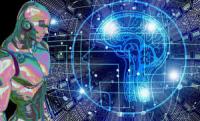
U.S. technology giant Microsoft has teamed up with a Chinese military university to develop artificial intelligence systems that could potentially enhance government surveillance and censorship capabilities. The advent of digital repression is profoundly affecting the relationship between citizen and state. New technologies are arming governments with unprecedented capabilities to monitor, track and surveil individual people. Even governments in democracies with strong traditions of rule of law find themselves tempted to abuse these new abilities.
-
-
Tech fixes cannot protect us from disinformation campaigns
More than technological fixes are needed to stop countries from spreading disinformation on social media platforms like Facebook and Twitter, according to two experts. They argue that policymakers and diplomats need to focus more on the psychology behind why citizens are so vulnerable to disinformation campaigns.
-
-
Detecting rare metals used in smartphones

A more efficient and cost-effective way to detect lanthanides, the rare earth metals used in smartphones and other technologies, could be possible with a new protein-based sensor that changes its fluorescence when it binds to these metals.
-
-
Rapid DNA technology ID’ed California wildfire victims
Amid the chaos and devastation of a mass casualty evet, medical examiners often provide closure as they identify victims in the aftermath, but their ability to do this quickly can vary depending on the size, scope, and type of disaster. Such challenges were the case following the Camp Fire wildfire that killed eighty-five people and devastated communities in Paradise, California, in the fall of 2018. S&T’s Rapid DNA technology became the first resort as it provided identifying information in under two hours when dental records and fingerprints weren’t available.
-
-
Nuclear weapons might save the world from an asteroid strike – but we need to change the law first
The schlocky 1998 Bruce Willis movie Armageddon was the highest grossing film of that year. The blockbuster saw a master oil driller (Willis) and an unlikely crew of misfits place a nuclear bomb inside a giant asteroid heading for Earth, blow it up – and save humanity. Armageddon isn’t exactly a documentary: it’s packed full of sci-fi nonsense. But, 20 years on, its basic plot – of using a nuclear explosion to avert a cataclysmic asteroid collision – doesn’t seem quite as silly as it did at the time.
-
-
Celestial menace: Defending Earth from asteroids

Incoming asteroids have been scarring our home planet for billions of years. This month humankind left our own mark on an asteroid for the first time: Japan’s Hayabusa2 spacecraft dropped a copper projectile at very high speed in an attempt to form a crater on asteroid Ryugu. A much bigger asteroid impact is planned for the coming decade, involving an international double-spacecraft mission.
-
-
Insect-inspired arm technology improve drone design
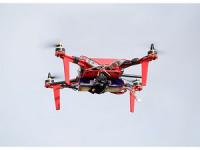
A drone delivery is great – on a perfect, sunny day. But what about when it’s windy? Most drones are not able to withstand wind because of their fixed-arm design. Researchers have come up with a patented design for drones that works in windy conditions, is more energy-efficient and can handle a larger payload.
-
-
Hurricane Maria's extreme rainfall due mostly to human-caused climate change
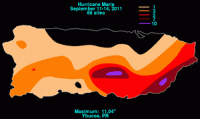
Hurricane Maria dropped more rain on Puerto Rico than any storm to hit the island since 1956, a feat due mostly to the effects of human-caused climate warming, new research finds.
-
-
How Columbine became a blueprint for school shooters
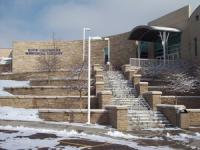
When twelve students and one teacher were killed in Littleton, Colorado twenty years ago, it not only became what at the time was the worst high school shooting in U.S. history. It also marked when American society was first handed a script for a new form of violence in schools. Since the 1999 tragedy at Columbine High School, we identified six mass shootings and forty active shooter incidents at elementary, middle or high schools in the United States. In twenty – or nearly half – of those forty-six school shootings, the perpetrator purposely used Columbine as a model.
-
-
S&T seeking partners for first responder technology R&D
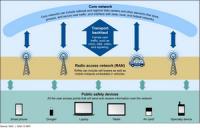
DHS S&T said it was inviting industry, academia, laboratories, and the innovation community to submit white papers related to twelve first responder technology funding opportunities. S&T said that each of the twelve topic areas “represent technology needs identified by responders themselves, and we are seeking the best partners to turn these needs into solutions.”
-
-
Climate change: Our greatest national security threat?
The climate century is here: the earth is warming, humans are to blame, and we must take immediate action now to prepare for climate change’s massively disruptive consequences. Mark Nevitt writes in Just Security that No longer can climate change be categorized solely as an environmental issue—it is a grave threat to national security. Indeed, it may be the threat. While there are many national security challenges facing the nation and the world, climate change is an aptly described “super wicked” problem that exacerbates and accelerates already existing threats.
-
-
Defending the Earth from asteroids
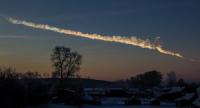
A mere 17-20 meters across, the Chelyabinsk meteor caused extensive ground damage and numerous injuries when it exploded on impact with Earth’s atmosphere in February 2013. To prevent another such impact, researchers use a simple yet ingenious way to spot these tiny near-Earth objects (NEOs) as they hurtle toward the planet.
-
-
Identifying new way to improve cybersecurity

With cybersecurity one of the nation’s top security concerns and billions of people affected by breaches last year, government and businesses are spending more time and money defending against it. Researchers have identified a new way to improve network security.
-
-
Sensing earthquakes in a new way to help improve early warning systems
Every year earthquakes worldwide claim hundreds or even thousands of lives. Forewarning allows people to head for safety and a matter of seconds could spell the difference between life and death. Researchers demonstrate a new earthquake detection method — their technique exploits subtle telltale gravitational signals traveling ahead of the tremors. Future research could boost early warning systems.
-
-
Novel compact antenna for communicating where radios fail
A new type of pocket-sized antenna could enable mobile communication in situations where conventional radios don’t work, such as under water, through the ground and over very long distances through air. The 4-inch-tall device could be used in portable transmitters for rescue missions and other challenging applications demanding high mobility.
-
More headlines
The long view
The Future of Open Data in the Age of AI: Safeguarding Public Assets Amid Growing Private Sector Demands
AI offers immense potential, but that potential must be realized within a framework that protects the public’s right to its own information. The open data movement must evolve to meet this new challenge—not retreat from it.
Horses for Courses: Where Quantum Computing Is, and Isn’t, the Answer
Despite the impressive and undeniable strides quantum computing has made in recent years, it’s important to remain cautious about sweeping claims regarding its transformative potential.
Federal R&D Funding Boosts Productivity for the Whole Economy − Making Big Cuts to Such Government Spending Unwise
Large cuts to government-funded research and development can endanger American innovation – and the vital productivity gains it supports. If the government were to abandon its long-standing practice of investing in R&D, it would significantly slow the pace of U.S. innovation and economic growth.
Why Ukraine’s AI Drones Aren’t a Breakthrough Yet
Machine vision, a form of AI, allows drones to identify and strike targets autonomously. The drones can’t be jammed, and they don’t need continuous monitoring by operators. Despite early hopes, the technology has not yet become a game-changing feature of Ukraine’s battlefield drones. But its time will come.
New Tech Will Make Our Airplanes Safer
Odysight.ai’s technology allows for constant monitoring of aircraft, sending alerts in case of malfunctions that could lead to accidents.
New Technology is Keeping the Skies Safe
DHS S&T Baggage, Cargo, and People Screening (BCP) Program develops state-of-the-art screening solutions to help secure airspace, communities, and borders
